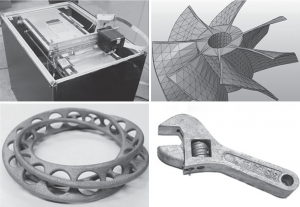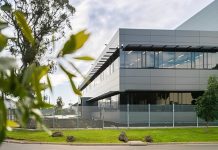A team of researchers at the University of Southern California, led by Dr Behrokh Khoshnevis, have developed a new method of metal printing called Selective Inhibition Sintering (SIS) that is the inverse of selective laser sintering and other forms of metal printing.

In their article, Dr Khoshnevis and his colleagues Payman Torabi and Matthew Petros reveal that SIS is an innovative technique of 3D printing, one that does not rely on lasers melting a metal alloy layer-by-layer. Instead, SIS relies on metal not melting.
Namely, a machine lays down a layer of metal powder on a print bed; then a commercial piezoelectric print head deposits a liquid solution only on the area which represents the boundary of the print; the solution acts as an inhibitor and prevents the metal that it is sprayed upon from melting once it’s heated; the solution-sprayed metal then hardens and clumps together; layers are added onto the print bed, the object is built up and at the very end of the printing process, the entire print is melted at a high temperature, leaving a solid object inside the inhibitor shell which is very easily removed.
The SIS-metal process has many advantages, including:
- The machine will be orders of magnitude lower in cost due to the use of a commercial print head instead of expensive laser or electron beam generators;
- The process is faster since only the boundary of the part is treated, whereas in other methods, the entire part cross section is scanned or treated. The speed of SIS would be significantly higher if vector (instead of raster) printing is used;
- SIS – metal parts are uncontaminated by any sort of binder or residue. The sintering characteristics of pure metal powder are superior to those of contaminated powder;
- Being free of binder, sintering of SIS parts does not contaminate the sintering furnace, if mineral inhibitors such as metal salts are used;
- There is no extra effort needed in support removal since any needed supports are attached to the “sacrificial mould” and not the part itself.
As for the inhibitor, the researchers used sucrose dissolved in water with an organic surfactant. The metal powder was a bronze alloy.
The project was funded by the National Science Foundation and was developed at the Centre for Rapid Automated Fabrication Technologies (CRAFT) at the University of Southern California.



















